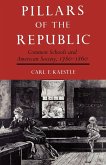The Republic of Creative Thought: How to incorporate creativity in your work and everyday life is a lifelong journey of ideas, mostly from others. We are all it seems, destined to be creative. It might take the right culture, the right environment, the right sunset, or the right person to ask the right questions to enhance creativity. This book looks at techniques that you can use to encourage creativity in your work and in your everyday life. "During my second term as Governor, many of my proposals came from suggestions made by volunteer transition teams and from recommendations made by state employees who wanted to improve the quality of state service. All it took was to let these people be creative and explore new ideas for the future. Creative thinking has made its way into modern industrial management and the creation of wealth. Toyota Production System made its appearance in mid 1977 and has since been referred to as the ultimate production system in the world. They believe it is not the conveyer that operates workers; it is workers who operate a conveyor-the foundation of a human respect environment. Your book and workshops will help to create that right learning environment." Honorable Cecil H. Underwood Former Governor of West Virginia "It is impossible to tell people how to be creative. When they follow your directions, they are being imitative rather than creative. It is possible, however, to lead people to the water of creativity-i.e., to "encourage" creativity. Dr. Jones provides the tools for encouraging adults to be creative. The reader learns how to create the proper environment and how to describe, evaluate, and reward creativity. The workshop suggestions empower readers to lead groups of friends or co-workers to the waters of creativity. Those same ideas may be used by interested readers to expand their capacity to "think outside the box." Dr. Edwin H. Welch President University of Charleston
Hinweis: Dieser Artikel kann nur an eine deutsche Lieferadresse ausgeliefert werden.
Hinweis: Dieser Artikel kann nur an eine deutsche Lieferadresse ausgeliefert werden.








